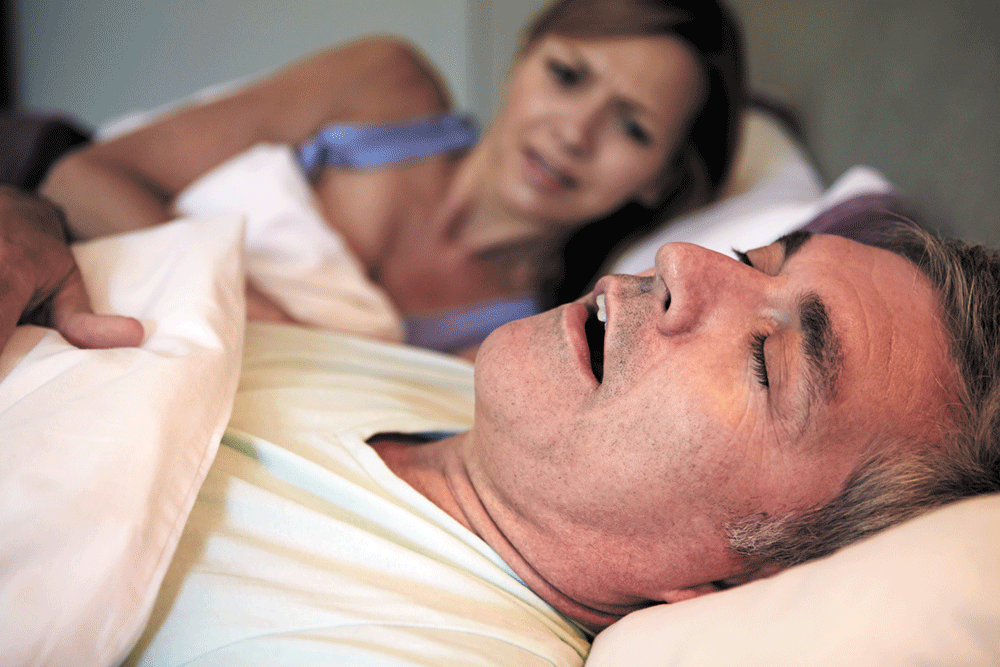Snoring is a common occurrence that many people experience during sleep. For some, it’s a mild annoyance, while for others, it can be a sign of a more serious condition known as sleep apnea. Understanding why we snore and the causes of sleep apnea is essential not only for improving sleep quality but also for enhancing overall health. In this blog post, we will delve into the mechanics of snoring, explore the various causes of sleep apnea, and discuss potential treatments.
What is Snoring?
Snoring occurs when airflow through the mouth and nose is partially obstructed during sleep. This obstruction causes the surrounding tissues to vibrate, resulting in the sound we recognize as snoring. While snoring can be harmless, it often indicates an underlying issue, especially when accompanied by symptoms such as gasping for breath or excessive daytime sleepiness.
What is Sleep Apnea?
Sleep apnea is a sleep disorder characterized by repeated interruptions in breathing during sleep. These interruptions can last for a few seconds to minutes and may occur dozens of times an hour, disrupting the sleep cycle. The two most common types of sleep apnea are obstructive sleep apnea (OSA) and central sleep apnea (CSA).
Obstructive Sleep Apnea (OSA)
OSA is the more prevalent form and occurs when the muscles at the back of the throat relax excessively during sleep. This relaxation causes the airway to narrow or close, obstructing airflow and leading to snoring or choking sensations. People with OSA often experience fragmented sleep, leading to fatigue and other health issues.
Central Sleep Apnea (CSA)
CSA, while less common, occurs when the brain fails to send proper signals to the muscles that control breathing. This can result from various factors, including medical conditions or neurological issues. CSA is often seen in individuals with certain neurological diseases or after a stroke.
Causes of Sleep Apnea
Understanding the causes of sleep apnea is crucial for effective treatment and management. Several factors contribute to the development of this disorder, including anatomical, physiological, and lifestyle elements.
1. Anatomical Factors
Certain physical characteristics can increase the risk of sleep apnea, including:
- Obesity: Excess weight, particularly around the neck, can lead to the narrowing of the airway, making it more susceptible to obstruction during sleep.
- Neck circumference: A thicker neck may indicate a higher likelihood of airway obstruction, contributing to snoring and sleep apnea.
- Tonsils and adenoids: Enlarged tonsils or adenoids, especially in children, can block the airway and lead to sleep-disordered breathing.
- Facial structure: Individuals with a recessed chin, large tongue, or a narrow airway may also be at greater risk.
2. Age and Gender
Age is a significant factor in the development of sleep apnea. As people age, the muscles in the throat may become weaker, increasing the likelihood of airway obstruction. Additionally, men are more likely to experience sleep apnea than women, although the risk for women increases post-menopause due to hormonal changes.
3. Lifestyle Factors
Certain lifestyle choices can exacerbate or contribute to the development of sleep apnea:
- Alcohol consumption: Alcohol relaxes the throat muscles, increasing the risk of airway obstruction during sleep.
- Smoking: Smoking can increase inflammation and fluid retention in the upper airway, leading to a higher likelihood of snoring and sleep apnea.
- Sedative use: Medications that relax the muscles, including sedatives and muscle relaxants, can worsen sleep apnea symptoms.
4. Medical Conditions
Several medical conditions are associated with an increased risk of sleep apnea:
- Diabetes: Individuals with type 2 diabetes are more likely to develop sleep apnea, as insulin resistance may contribute to weight gain and fat deposits around the neck.
- Hypertension: High blood pressure is both a risk factor and a consequence of sleep apnea, as the condition can lead to cardiovascular strain.
- Heart disease: There is a strong link between sleep apnea and heart-related issues, including atrial fibrillation and heart failure.
Treatment and Management
Identifying the causes of sleep apnea is crucial for obtaining effective treatment. If you think you or someone you care about might be experiencing sleep apnea, it’s important to consult a healthcare professional. In West Seneca, NY, various sleep apnea treatment options are available, including:
- Lifestyle modifications: Weight loss, quitting smoking, and reducing alcohol intake can significantly improve symptoms.
- Continuous Positive Airway Pressure (CPAP): This device delivers a steady stream of air through a mask, keeping the airway open during sleep.
- Oral appliances: Custom-fitted mouthpieces can help reposition the jaw and tongue to keep the airway open.
- Surgery: In severe cases, surgical options may be considered to remove excess tissue or correct anatomical issues.
In Conclusion
Understanding the reasons behind snoring and the causes of sleep apnea is crucial for promoting better sleep health. While snoring can often be a harmless nuisance, it can also be a warning sign of sleep apnea, which requires attention and intervention. By recognizing risk factors and seeking appropriate treatment, individuals can improve their sleep quality and overall well-being. If you or someone you know struggles with snoring or experiences symptoms of sleep apnea, don’t hesitate to consult a healthcare professional for guidance and support.
